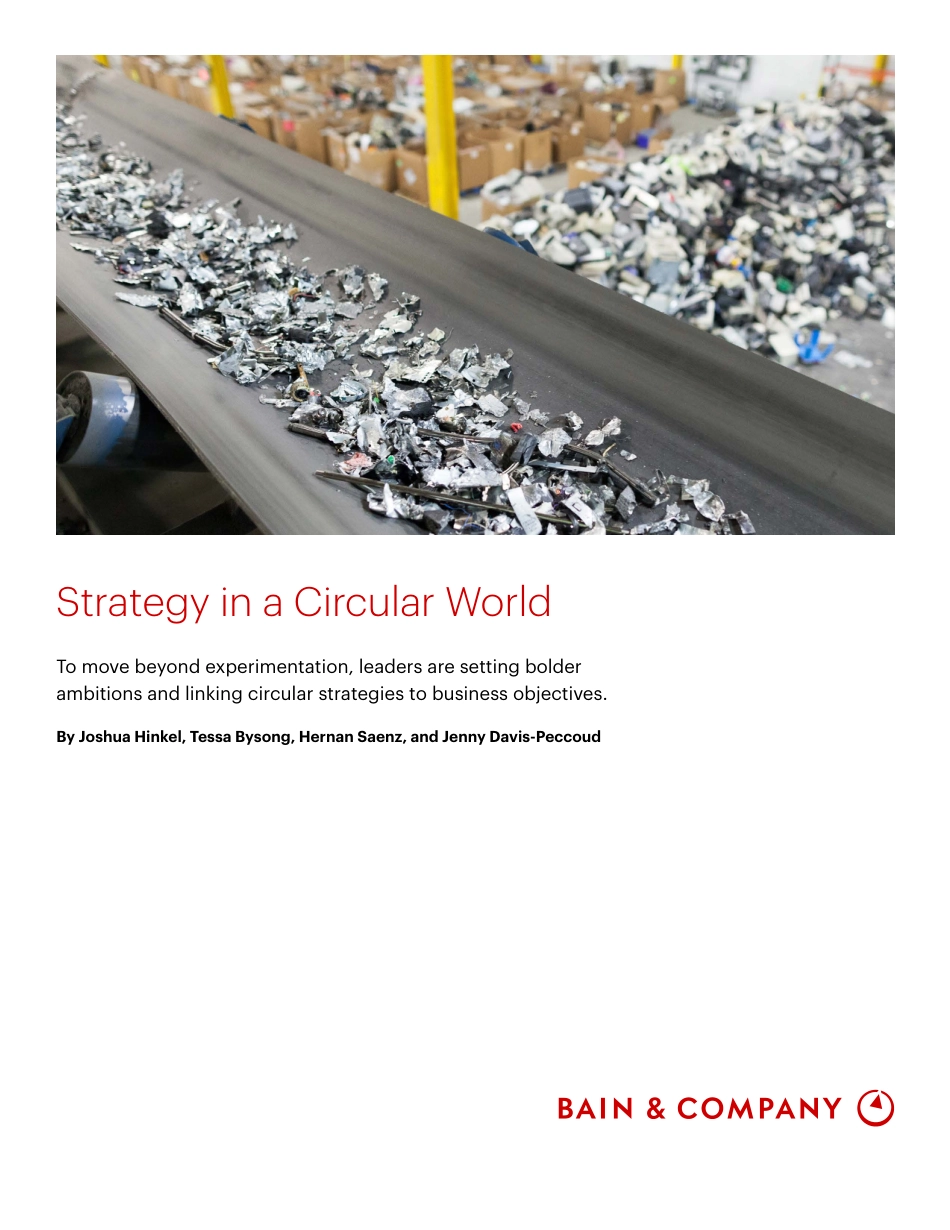To move beyond experimentation, leaders are setting bolder ambitions and linking circular strategies to business objectives.By Joshua Hinkel, Tessa Bysong, Hernan Saenz, and Jenny Davis-PeccoudStrategy in a Circular World Copyright © 2023 Bain & Company, Inc. All rights reserved.1Strategy in a Circular World At a Glance `More than half of circularity initiatives are limited to recycling or waste management, a Bain study shows. `As industries go circular, profit pools will shift, creating new opportunities. `Companies that invest early in circular operating models and business models will have a first-mover advantage.For many leadership teams, the transition to circular strategies and business models feels like rolling a huge stone uphill. They know it’s important, but progress is painfully slow. Initiatives remain narrow in scope, have limited impact, and are difficult to scale.Part of the problem is that senior executives operate with a linear mindset. That’s understandable since today’s businesses were designed for a linear world. But to make the most of circular solutions, executives need to rethink how they run the business and decouple growth from resource consumption. That requires operating models and business models designed to preserve materials, increase product utilization, and extend product life spans (see Figure 1).It’s a huge break with industry norms and best practices in the past century. Without new business models and reconfigured value chains, operations will remain linear and progress toward circularity incremental. A recent Bain study of 400 leading organizations found that while 55% had made commitments to circularity, more than half of the initiatives were confined to recycling or wa...



